If you are visiting the Orosi Valley, southeast of San Jose, a coffee tour is a must-do activity. Costa Rica has many different regions that grow coffee, and each one produces different flavors. In this post, we will tell you about visiting Cafe Artesanal Los Sauces. This coffee farm and micro-cooperative in the hills above Orosi produces some of the tastiest coffee we have tried.
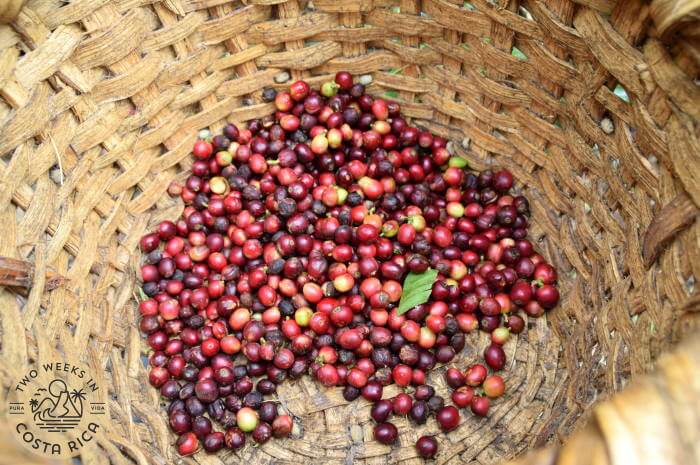
Coffee: A Traditional Crop
Coffee has been grown in Costa Rica since the late 1700s when it was introduced. With cooler temperatures at high altitudes and fertile soil from volcanoes, the crop quicky thrived and became one of the country’s biggest exports.
While today coffee is just one of many different crops grown in Costa Rica, the tradition has not been lost. Small growers on hillsides across the country and even some bigger commercial operations (like Cafe Britt and Starbucks) produce some world-renowned flavors.
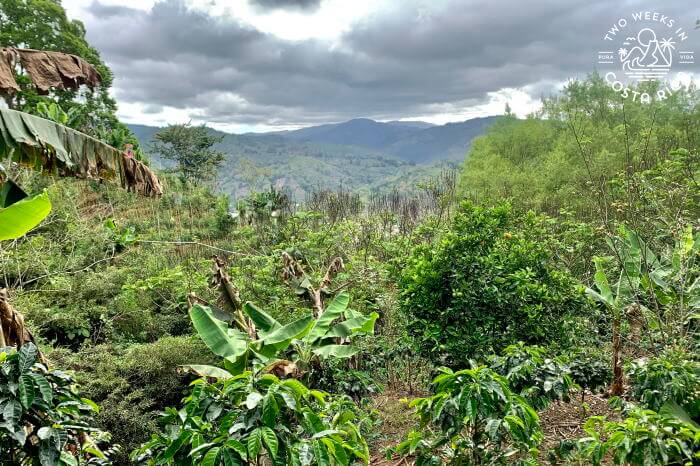
Cafe Artesanal Los Sauces
When visiting the town of Orosi, we were happy to find several small, locally owned coffee farms nearby. We chose to visit Cafe Artesanal Los Sauces. This family-owned business is also a micro-cooperative.
This means that they not only grow and process their own coffee but also process and roast coffee grown by some of their neighbors. Everything is done in small batches, with high attention to detail.
In our many years in Costa Rica, we have done several coffee tours. The interesting thing about Los Sauces’ coffee tour was that we got to see the complete process, from bean to bag. Usually, some of the production details are left out or only for demonstration purposes, but here we saw it all.
The Coffee Tour
When we arrived at Cafe Artesanal Los Sauces, we knew we were in for an authentic experience. A warm welcome from the owners and their small dogs made us feel right at home.
The traditional, wood-framed house with beautiful gardens was charming, set on the mountainside. Indeed, it was a very steep drive up the road to get there, but once we arrived, we were rewarded with some lovely views of the green valley.
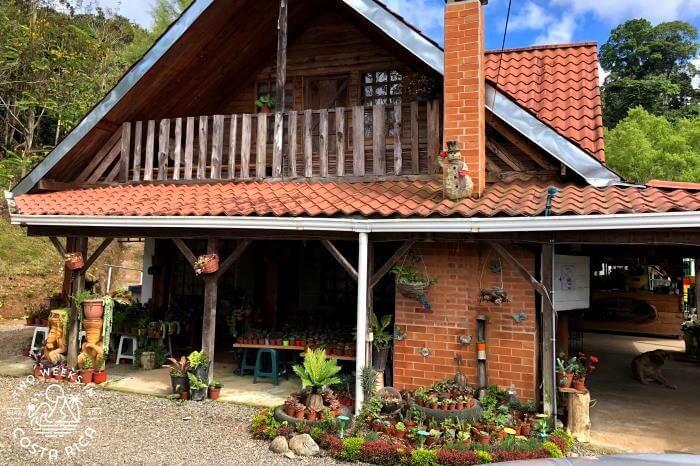
After a snack of fresh fruits, Mario, the owner, led us to a trail. In minutes, we had climbed part of the hillside and were in the heart of their coffee fields.
Along the way, Mario pointed out different plants, fruit trees, and flowers that grew alongside the coffee. These plants, he explained, help increase biodiversity in the field, which keeps the coffee crop healthy.
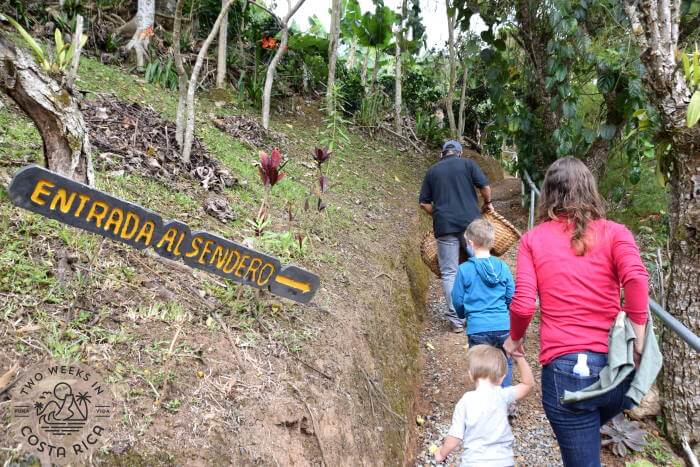
One tree he pointed out was especially important. The local name was el sauce. We know it as the willow tree. The presence of these trees on the property gave the farm its name, Los Sauces (the Willows). These trees, Mario explained, have strong roots that help stabilize the soil, especially on a steep slope like we were on.
In Costa Rica, a property with los sauces growing on it is a good one, especially in an area like Orosi, which gets a lot of rain.
Picking Coffee
Soon it was time to pick some coffee. Most of the coffee plants we had seen on the trail had pretty white flowers. These would eventually develop into new coffee beans that would be harvested later in the year.
Though it wasn’t true picking season when we visited in March, Mario had purposely not picked some sections of the field. This left plenty of coffee beans on the plants for visitors like us.
He cinched large baskets around our waists (even the kids) and showed us which beans to pick. A red color meant they were ready. The kids loved this part. Even our two-year old was happy picking beans and tossing them into the woven basket. The adults admittedly had lots of fun too.
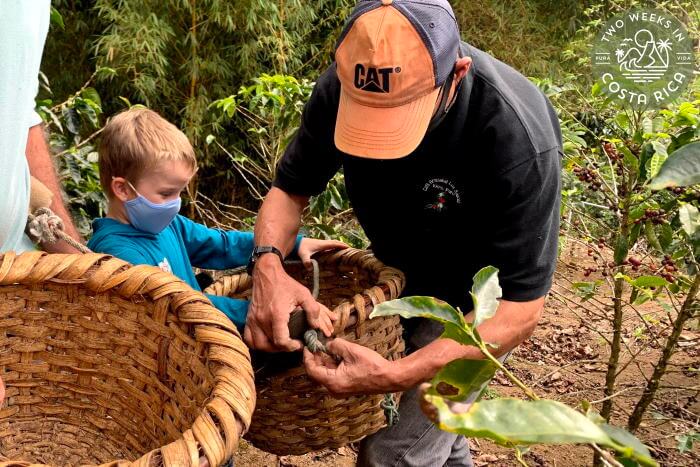
Coffee Processing
After getting our hands dirty in the field, it was time to see the next step in the coffee-making process.
We meandered down the trails, back to the farmhouse. Mario explained that we first needed to remove the outer coating from the coffee beans.
Soon he was dumping the contents of our baskets into an old-fashioned grinder. Our son, Sam, was happy to turn the crank as beans spit out the bottom. On one side was the husk, and on the other, the naked bean.
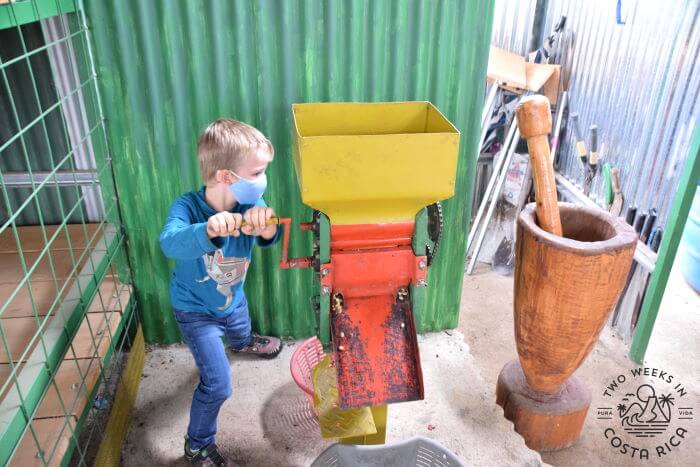
With the outer shells of the beans removed, Mario led us into the drying greenhouse. Inside were flat racks filled with coffee beans. We learned that depending on the weather, the beans have to sit here and dry for at least a couple of weeks. They stir them occasionally with long rakes.
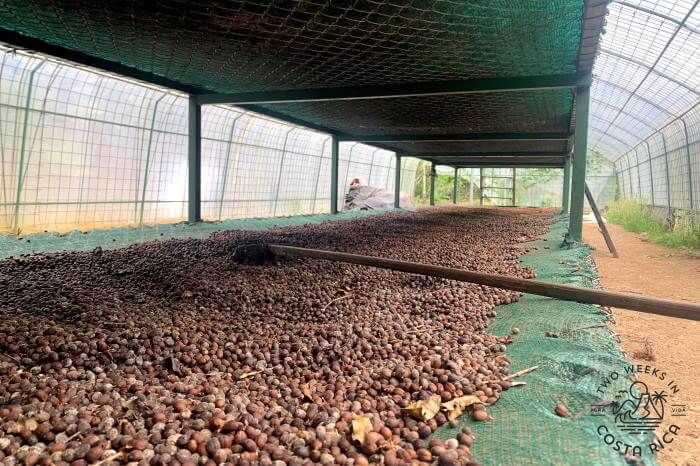
In doing so, much of the bean’s moisture is evaporated. What is left is a dry bean with a papery coating on the outside. Before roasting, we needed to remove that next layer. Mario, of course, showed us how.
The next machine was similar to the grinder but was electric and whizzed the beans through quickly. Almost all the papery coating was removed and blown out the back into their garden. This residue, they used as an organic mulch. The coffee beans ended up in a basket below the machine, ready to be roasted.
Coffee Roasting
Being careful that the kids kept their distance, Mario fired up the stainless steel coffee roaster. This was part of the coffee process that we had never seen before. Inside the machine, small blue flames quickly heated up the roasting chamber.
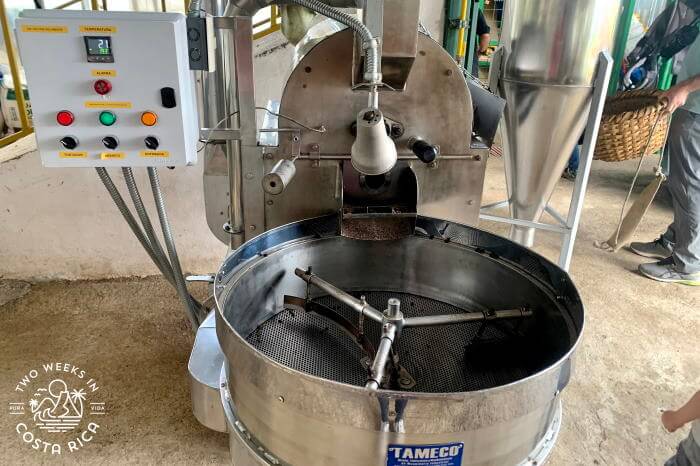
While we waited for it to come to temperature, we got to explore the gardens and property. Just below was a giant willow tree with a duck pond underneath for the kids to visit. We also took in the nice view of downtown Orosi, far below in the valley.
Mario soon called us back. It was time for the beans to go in. We watched as he poured them into the shoot above and released a lever. The beans entered the roasting chamber as it spun, sort of like a clothes dryer. Mario told us that once the beans started to make noise, the roasting process was almost complete.
Sort of like popcorn popping, he was right; the beans eventually began to make a hissing noise inside the chamber.
Mario checked the color of the beans with a tester few times. He had a chart that told him the perfect color to look for.
As the temperature gauge beeped in the background, Mario checked the color one last time and then quickly pulled another lever. Beautifully roasted beans, the perfect brownish-black hue, spilled into a metal tray. The powerful smell of coffee filled the crisp air as the beans let out some steam.
Grinding and Bagging
Next, Mario’s wife showed us how the coffee grinder worked. She removed some cooled beans from a vacuum-tight container and led them through the grinder. We were hit with another wave of intense coffee smell!
After the grinding process, coffee bags were carefully filled by hand. Each was weighed and sealed with a special machine. Mario explained that they are moving towards ecofriendly paper bags soon, which are more sustainable.
A Taste of Costa Rican Coffee!
Finally, the moment we were waiting for—the tasting. Being avid coffee drinkers and needing an afternoon pick-me-up, we were especially excited for this part.
Mario’s wife led us to a table that was already set. She then went back into the kitchen and brought out a metal carafe full of coffee, watermelon juice for the boys, and some warm tortillas de queso for a snack.
These authentic Costa Rican tortillas are made with local Turrialba cheese, giving them a rich flavor. They went perfectly with the freshly brewed coffee and made for a memorable end to a great tour.
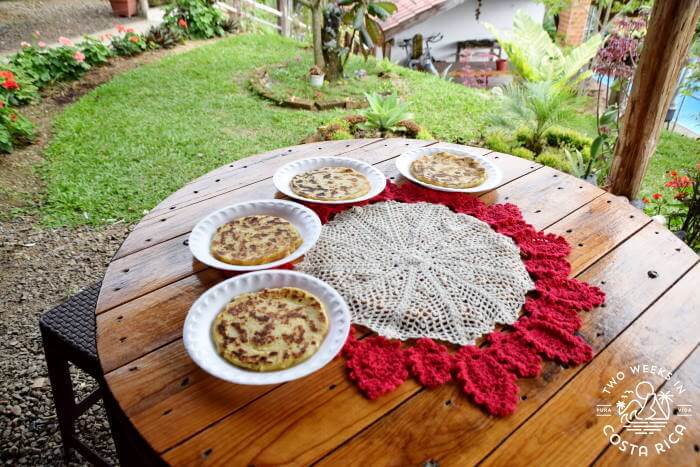
Planning Your Visit
Coffee tours at Cafe Artesanal Los Sauces are available by appointment.
You can contact them through their website, Facebook page, or through WhatsApp (506-8954-7144).
Tours are in Spanish, but English is available with prior notice.
The tour length is about 2.5 to 3 hours (including some downtime during roasting).
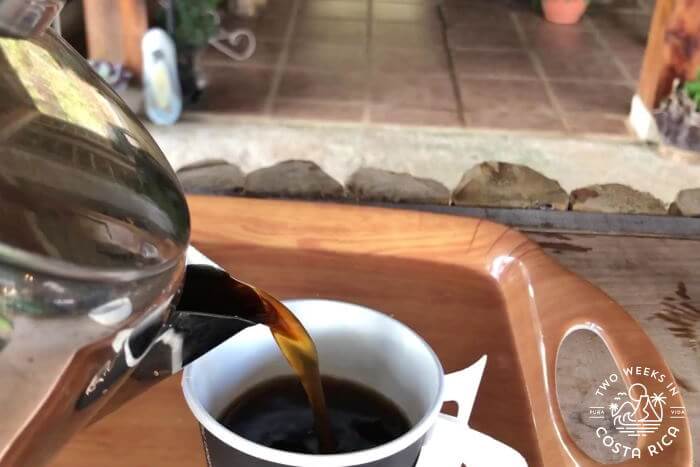
Tour Cost
Adults: 10,000 colones (about $16).
Children ages 5-12: 3,000 colones (about $5).
A traditional lunch is available for an additional 7,000 colones (about $11.50).
Tours with transportation included are 15,000 colones (about $25).
Getting There
Café Artesanal Los Sauces is located off Route 224 in the town of Orosi. The farm is up a steep mountain, and although the road is concrete, a 4×4 vehicle is recommended. It can be slippery, narrow, and is not in the best condition. Here is the location on Google Maps.
What to Wear/Bring
Temperatures are cooler at the farm and it is often rainy. Much of the tour is under the cover of a roof, but the coffee fields are open.
We recommend that you dress in layers and bring a light jacket and umbrella.
Sturdy footwear is best for the trails.
Be sure to bring extra cash to purchase coffee as a souvenir. After drinking it at home, we wished we had bought more!

Conclusion
It was fun to see the entire coffee process and taste the delicious java grown among los sauces (the willows) for ourselves. If you are visiting the Orosi Valley or looking for an authentic cultural tour as a day trip from San Jose, we highly recommend Cafe Artesanal Los Sauces.
Have you done a coffee tour in Costa Rica? What was your favorite part? Leave a comment below.
Looking for more articles to help you plan a trip to the Orosi Valley? Check out these posts:
Orosi: A Valley of Green – Read our full destination guide to the Orosi area to get a feel for the area, its attractions, restaurants, and hotels.
Tapanti National Park: Wild Rivers and Wet Forest – This national park is not often on the tourist map and the jungle is pristine and beautiful. See our post for details on how to visit.
Hacienda Orosi Hot Springs and Farm – A soak in these hot springs will soothe your muscles and mind. The onsite farm is also a great feature, especially for kids.
Rental Car Discount – If you are visiting this region, a rental car is recommended since things are spread out. Check out this page to get a discount with one of the most reputable companies and free extras.
